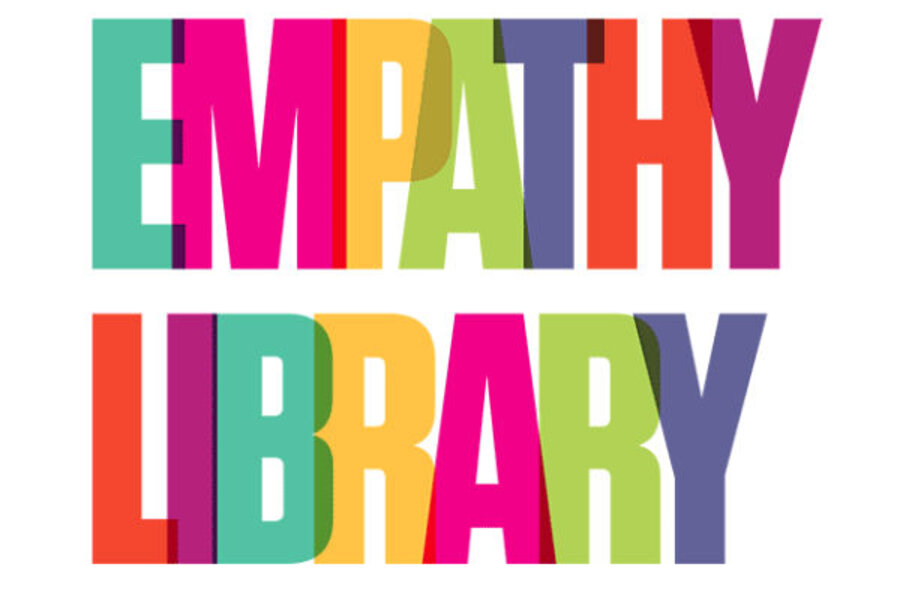Teaching kids to care, one book at a time
We’ve all read books and watched films that have transported us and changed us, that have catapulted our imaginations into lives vastly different from our own. Think of a movie like "City of God," which reveals the violent world of two boys growing up in the shantytowns of Rio. Or the novel "To Kill a Mockingbird," with its classic line “You never really understand another person until you consider things from his point of view – until you climb inside of his skin and walk around in it.”
These are the kinds of books and films that take us on unforgettable empathic journeys, enabling us to step into the shoes of strangers and look through other people’s eyes. It’s what I refer to in my new book "Empathy: A Handbook for Revolution" as “armchair empathy” – a kind of travel you can do from the comfort of your own home.
But where can we find the very best examples from amongst the overflow of online information, book reviews, and movie guides? That’s why I’ve just founded the world’s first online Empathy Library, a digital treasure house where you can discover inspiring and powerful novels, non-fiction books, feature films, and video shorts all about empathy.
I wanted to create a place where anybody, anywhere in the world, could find the best resources for helping us escape from the narrow confines of our own experiences and enter the realities of different cultures, generations, and lives.
So how does the Empathy Library actually work? Although it doesn’t contain items to borrow or view, there are reviews and ratings of over 100 books such as Toni Morrison’s "The Bluest Eye" and George Orwell’s "Down and Out in Paris and London," alongside movies like "Gandhi" and "Avatar." The library collection also includes dozens of fantastic books and films for children and teens. Visitors can search the collection and view Top Ten Charts, and join up to add their own favourite items and comment on others.
It’s a growing and vibrant global community. Thousands of people have already come through the virtual doors of the library since its launch – around half from the United States, and some 10 percent from both Britain and Brazil – and have been adding to the collection every day. It has caught the attention of librarians in Australia, school teachers in Canada and India, and social entrepreneurs in the Netherlands.
Why all this interest in the Empathy Library? One major reason is that empathy is a more popular concept today than at any time in human history. Everybody’s talking about it, from the Dalai Lama to agony aunts, from business gurus to happiness experts. And it’s not surprising, since in the last decade neuroscientists have discovered that 98 percent of us have empathy wired into our brains. The old story that we are basically selfish, self-interested creatures has been debunked. Our selfish inner drives exist side by side with our empathic other half. We are homo empathicus.
Crucially, there has also been an avalanche of recent neuroscience and psychology research showing that we can learn to empathise, and that entering other people’s lives through books and films is one of the best ways of doing it. As the novelist Ian McEwan put it, “Imagining what it is like to be someone other than yourself is at the core of our humanity. It is the essence of compassion, and it is the beginning of morality.”
Part of my inspiration for starting the Empathy Library is personal. I have five-year-old twins and have always been on the lookout for great ways to teach them the core elements of emotional literacy such as empathy, cultural tolerance, and mutual understanding. My internet searches for quality resources sometimes yielded results but proved frustratingly random. So I dreamed up the Empathy Library to help solve the problem and bring the most moving, memorable, and fascinating empathy books and films under a single digital roof.
My hope is that teachers and other educators will discover a wealth of materials to use with young people in their endeavours to teach them empathy, a vital life skill that is now being taught through education programmes worldwide such as Roots of Empathy and Ashoka’s Start Empathy initiative (both official supporters of the Empathy Library).
Beyond this, the Empathy Library is designed to provide a host of ideas for reading groups, film clubs, and empathy projects in community organisations and workplaces. And it is also somewhere you can go to find an engaging book to read your kids or a classic movie to watch on a Friday night.
Ultimately, the aim of the library is to create an online community resource for the planet’s empathic thinkers and activists. Think of it as Goodreads for the empathy revolution.
So come and visit the Empathy Library and allow your mind to enter another world. Give yourself a glimpse into what it might be like to be a child growing up in Tehran, or to be born without sight, or to be a soldier fighting someone else’s war. These are the imaginative journeys than can both change ourselves and the societies we live.
This article originally appeared on the Startempathy.org blog, published by the Start Empathy project from Ashoka.





